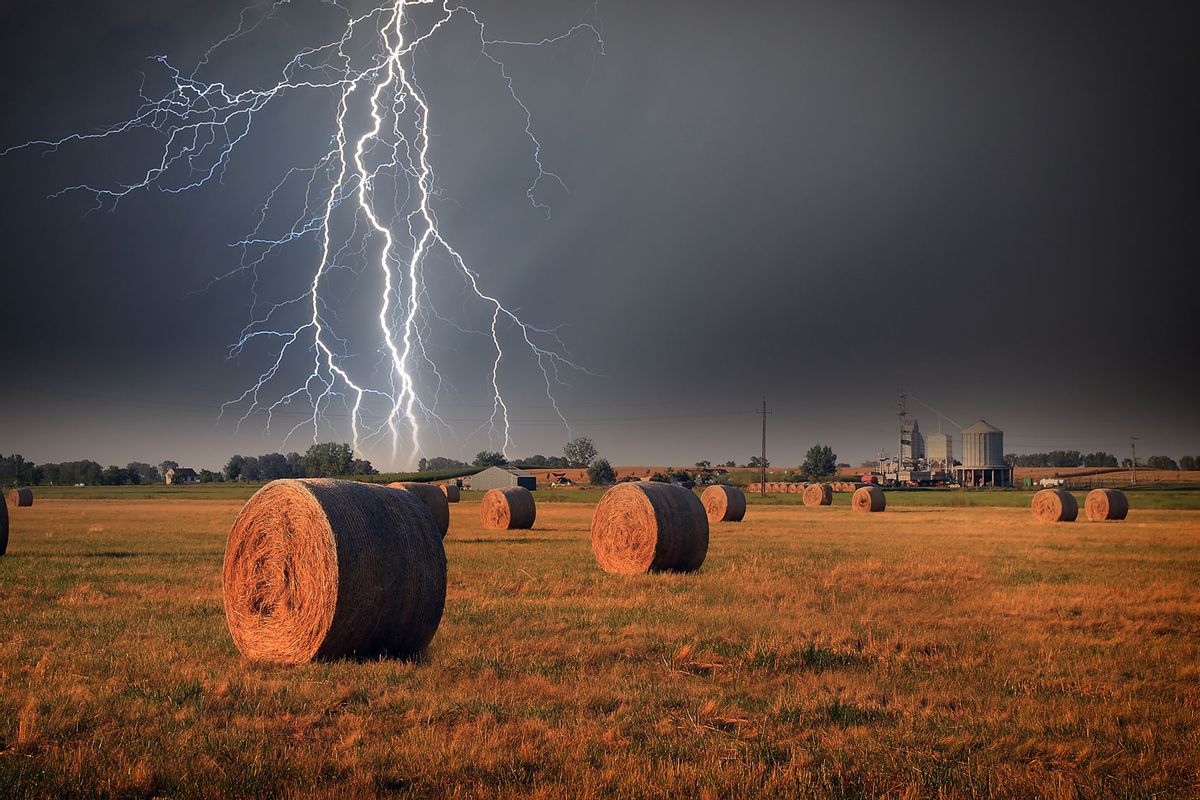As rounds of severe weather — complete with thunderstorms, hail and flooding — continue to pummel Dallas and surrounding Texas counties, many of the over 650,000 people who were left without power are grappling with the question of how they will afford to replace the food they lost in the nearly week-long outage. According to the Food and Drug Administration, perishables like milk, eggs and meat can only keep cold for about four hours in an unopened refrigerator, meaning that for many Texans, the entirety of their fresh food supply had to go in the garbage.
They aren’t alone.
Just a few weeks ago, Community Food Share, a Colorado food bank that serves Boulder and Broomfield counties, lost 1,500 pounds of food during a windstorm with gusts up to 100 miles per hour, which prompted a preemptive power outage from Xcel Energy. It’s a tremendous loss, but one that chief executive officer Kim Da Silva has cautioned could have been worse.
"We were actually able to salvage almost all of the food that was in our freezers and our refrigerators,” she told local Colorado television station KUSA. “Which we're so thankful for that because that was about $80,000 worth of food.”
All in all, it was a stroke of luck, but with power outage-causing storms on the rise, luck can only go so far in preventing similar — and larger — losses, which means that food pantries are increasingly having to adapt their operations to account for the effects of climate change.
As reported by The Conversation, many Americans think of power outages as infrequent inconveniences, however data shows that major power outages have “increased tenfold since 1980, largely because of an aging electrical grid and damage sustained from severe storms as the planet warms.” According to an analysis by Climate Central, a nonprofit research group, 80% of all major US power outages were due to weather from 2000 to 2023, with the number of weather-related outages from 2014 to 2023 doubled when compared to outages at the start of the century.
Relatedly, in 2021, the Intergovernmental Panel on Climate Change (IPCC)’s Sixth Assessment Report found human-caused rise in greenhouse gasses has increased the frequency and intensity of extreme weather events.
In contemporary American society, going without power for any length of time is, at best, an inconvenience, but for communities that are already marginalized, a lack of electricity can dovetail with adverse health effects — especially in poorer communities where, as studies have shown, the outages tend to drag on for longer.
We need your help to stay independent
For instance, after analyzing data from 15 million consumers in 588 U.S. counties who lost power when hurricanes made landfall between 2017 and October 2020, a February report from Chuanyi Ji of the Georgia Institute Of Technology and Scott C. Ganz of Georgetown University found socioeconomically disadvantaged communities often wait longer to see their power restored.
“A 1-decile drop in socioeconomic status in the Centers for Disease Control and Prevention’s social vulnerability index was associated with a 6.1% longer outage on average,” they write for The Conversation. “This corresponds to waiting an extra 170 minutes on average for power to be restored, and sometimes much longer.”
The pair continues: “The upshot is that households that are already at greater risk from severe weather — whether due to being in flood-prone areas or in vulnerable buildings — and those who are least likely to have insurance or other resources to help them recover are also likely to face the longest storm-caused power outages. Long outages can mean refrigerated food goes bad, no running water and delays in repairing damage, including delays in running fans to dry out water damage and avoid mold.”
Some researchers refer to the inability to meet household energy needs, whether that be because of cost or extreme weather events impacting failing infrastructure, as energy insecurity. It’s a concept that doesn’t just mirror food insecurity, but one that coincides with it, especially during and following power outages that may force already vulnerable people to trash whatever fresh or frozen food they have on-hand. It’s a loss that many Americans, who are already beleaguered by sustained grocery costs, would feel acutely.
In order to maintain service to the communities that need them most, food pantries across the United States are starting to update their own personal infrastructure to ensure they maintain power during outages — or at least have a plan if the lights go out. Many of the best examples are found in areas that are hotbeds for inclement weather.
For instance, Feeding South Florida has bought backup generators and insulated storage facilities to ensure refrigerated supplies are protected during hurricanes. After Hurricane Harvey, the Houston Food Bank implemented similar measures, while also establishing partnerships with local businesses who would provide storage and transportation in the case of an emergency.
The Midwest Food Bank — which serves multiple states in the region — utilizes elevated storage in areas that are flood-prone, while the Greater Baton Rouge Food Bank built their own flood barriers. Meanwhile, the Community Food Bank of New Jersey invested in a fleet of refrigerated trucks in case they need to move supplies out of the immediate area.
These are big investments for organizations that are already stretched pretty thin (following the pandemic, nearly two-thirds of responding food banks reported to Feeding America an increase in demand for food assistance) but ones that are needed in order to continue serving those in need when they most need it.
“With the economic pressures that everyone is facing, right, and inflation and costs of food,” Christina Cavalier, senior director of community relations for The Salvation Army in Colorado told KUSA. “For people that are experiencing poverty or … already experiencing food insecurity, to lose everything due to a power outage can be devastating to them.”
Read more
about this topic



Shares